A total of 19 teams from 10 universities around the world have put forth a diverse range of speculative urban and architectural design proposals to address river flooding.
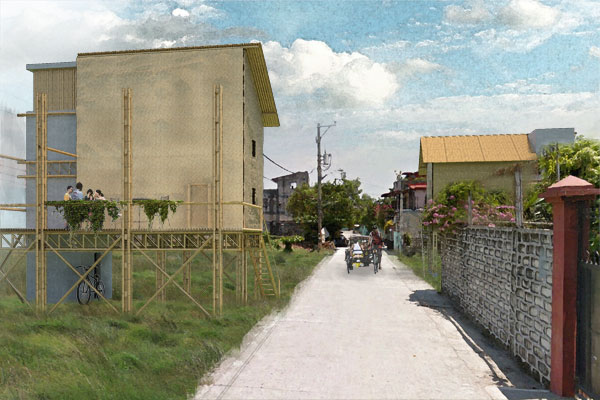
July 7th, 2016
Top image: UGAT: Re-establishing and Strengthening Existing Roots by University of Montreal, Team B
In the wake of many recent large-scale natural disasters in Asia, a competition such as one to do with designing resilience takes on particular gravity.
Organised by the National University of Singapore’s (NUS) School of Design and Environment and now in its second year, the Designing Resilience in Asia 2016 International Design Competition focused on the issue of river flooding, with student teams from universities in Asia, Australia, Europe and North America challenged to provide innovative and integrated solutions to address the flooding problem in Valenzuela City, Philippines. The resulting proposals were richly diverse, bringing wide-ranging discussions to the table.
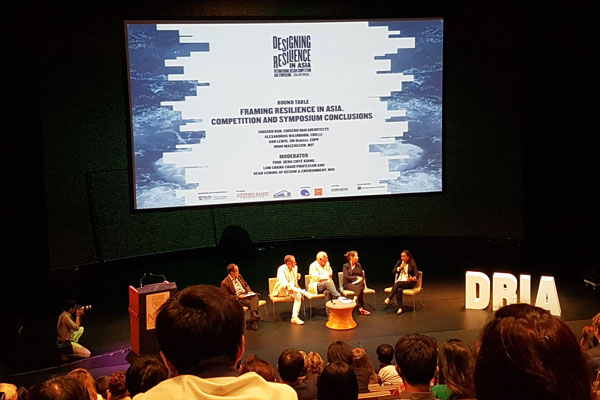
Round Table: Framing Resilience in Asia. Competition and Symposium Conclusions. Moderated by Professor Heng Chye Kiang, Dean of the NUS School of Design and Environment. Speakers/members of the jury included Alexandros Washburn, CRU(X) Center for Coastal Resilience and Urban Excellence; Dan Lewis, Chief Director of UN-Habitat. Urban Risk Reduction Unit. City Resilience Profiling Programme; and Miho Mazereeuw, Assistant Professor and Director of the Urban Risk Lab at MIT.
“The competition series has provided a unique platform for researchers and students from different universities worldwide to collectively study and discuss innovative ideas and propositions pertaining to the resilience of Asian cities in view of natural disaster scenarios,” says Professor Heng Chye Kiang, Dean of the NUS School of Design and Environment. “We are impressed and encouraged by the breadth of ideas presented in the proposals. To take these ideas further and bridge research with practice, the School has signed a Memorandum of Understanding with UN-Habitat to use research outcomes from the competition series to explore possible implementation in afflicted areas around the world.”
The Overall Design Excellence Award (First Prize) was awarded to University of Montreal for their entry UGAT: Re-establishing and Strengthening Existing Roots; the Urban Design Excellence Award to TU Darmstadt for their entry S.A.F.E. Waterscape; and the Architectural Design Excellence Award to South China University of Technology for their entry Vigor of Vacancy. The top three winning submissions received cash prizes of S$8,000, S$4,000 and S$4,000 respectively.
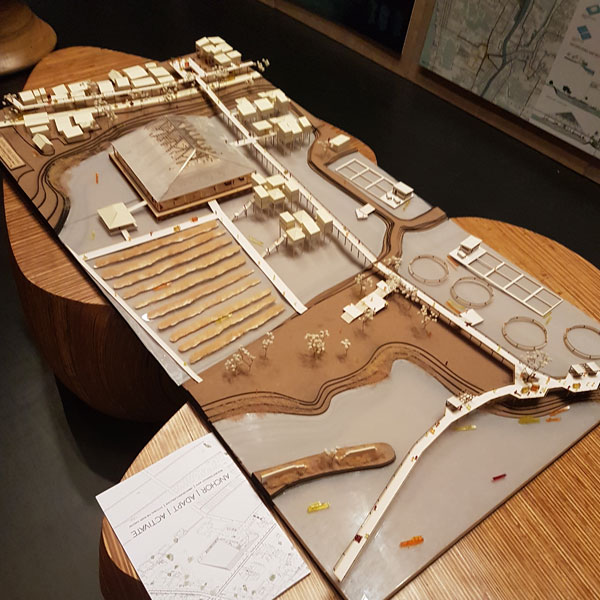
The exhibition of competition proposals at Genexis Theatre, 1 Fusionpolis Way
UGAT: Re-establishing and Strengthening Existing Roots by University of Montreal, Team B (Overall Design Excellence Award)
This project (top image) manifests itself in two complementary dimensions – working within the existing urban fabric and increasing resiliency via the planting a diversity of vegetative roots.
Three types of vegetation were chosen for their specific benefits. Mangroves create a multitude of thick bands along water, offering protection against winds and typhoon. Their roots are also a great habitat for sea creatures. Moso Bamboo plantations can be found throughout the land, and their growth cycle dictates the project phasing development. Malungay leaves – the paste derived from this plant can be used to purify water.
Resilience is strengthened via water filtration and retention systems, while a network of footbridges will increase mobility in any weather. Barangay Cooperatives in strategic locations will serve as training centres, production plants and safe havens, and new above ground houses (concrete/bamboo hybrids) can be doubled to meet larger capacity needs if necessary.
S.A.F.E Waterscape by TU Darmstadt, Team B (Urban Design Excellence Award)
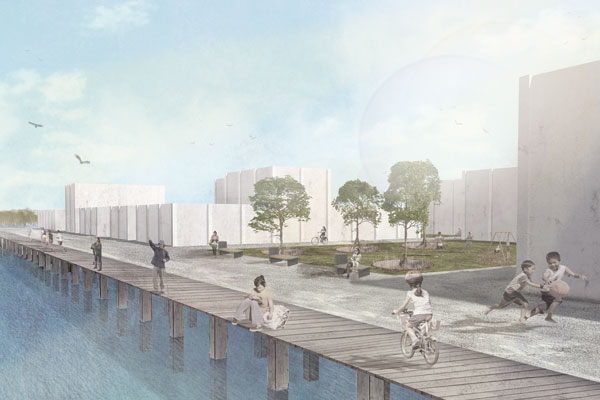
This project approaches the issue of flooding on a larger-scale with a focus on the watershed management of Manila. The team’s vision is to upgrade the resilience of the inhabitants in the whole Polo area and thus provide better living conditions up to the La Mesa Dam. The goal, too, is to reintegrate nature into the city. The proposal involves the implementation of a big park connecting La Mesa Dam following the Tulahan River, the Polo River, and the Meycuayan and Marilo Rivers with the new Eco Reservoir. The park would serve to satisfy recreational needs, while reducing the amount of water in the Polo River. Different actions will be implemented from upstream to downstream flows, with the aim to stabilise the whole area. The underlying concept is spelt out in the project’s name – S.A.F.E (Sustainable, Accessible, Flexible, Ecological).
Vigor of Vacancy by South China University of Technology, Team A (Architectural Design Excellence Award)
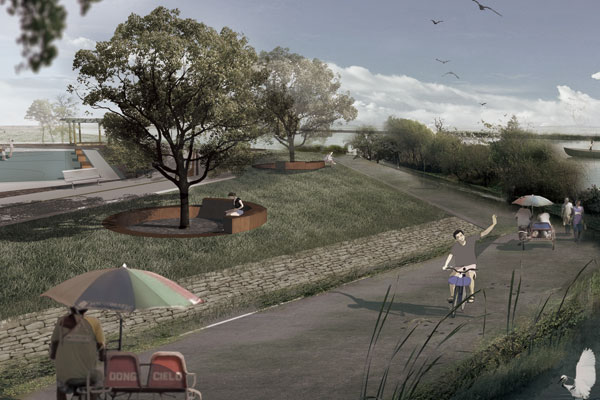
The project site, located near Polo Center, the City of Valenzuela, is well connected to Metro Manila, and has access to the vast wetlands with high ecological value. During past development, areas of water were divided into different sections, and became eroded by the waterfront. The City faces issues during periods of flooding, while nature is compromised by urbanisation. This design proposal aims to alter the negative relationship between nature and the City, by implanting vigorous vacancy in each of the systems of water, ecology and community. Within the vacancy, various interactions take place to maintain the balance between nature and the City.
Click here for more information about the Designing Resilience in Asia 2016 International Design Competition.
A searchable and comprehensive guide for specifying leading products and their suppliers
Keep up to date with the latest and greatest from our industry BFF's!

Sub-Zero and Wolf’s prestigious Kitchen Design Contest (KDC) has celebrated the very best in kitchen innovation and aesthetics for three decades now. Recognising premier kitchen design professionals from around the globe, the KDC facilitates innovation, style and functionality that pushes boundaries.

Create a configuration to suit your needs with this curved collection.

In the pursuit of an uplifting synergy between the inner world and the surrounding environment, internationally acclaimed Interior Architect and Designer Lorena Gaxiola transform the vibration of the auspicious number ‘8’ into mesmerising artistry alongside the Feltex design team, brought to you by GH Commercial.

Savage Design’s approach to understanding the relationship between design concepts and user experience, particularly with metalwork, transcends traditional boundaries, blending timeless craftsmanship with digital innovation to create enduring elegance in objects, furnishings, and door furniture.

Plans for Sydney’s next great public space are underway, opening a rare opportunity for design teams to answer the call to design a 1.85-hectare Harbour Park that will sit at the heart of Barangaroo, right on the foreshore of Sydney Harbour.

We introduce you to the 65 Sustainability Awards finalists who are revolutionising Australia’s built environment.
The internet never sleeps! Here's the stuff you might have missed

The Australian Design Centre (ADC) this year celebrates 60 years! A series of events are coming up to mark the occasion.

Create a configuration to suit your needs with this curved collection.